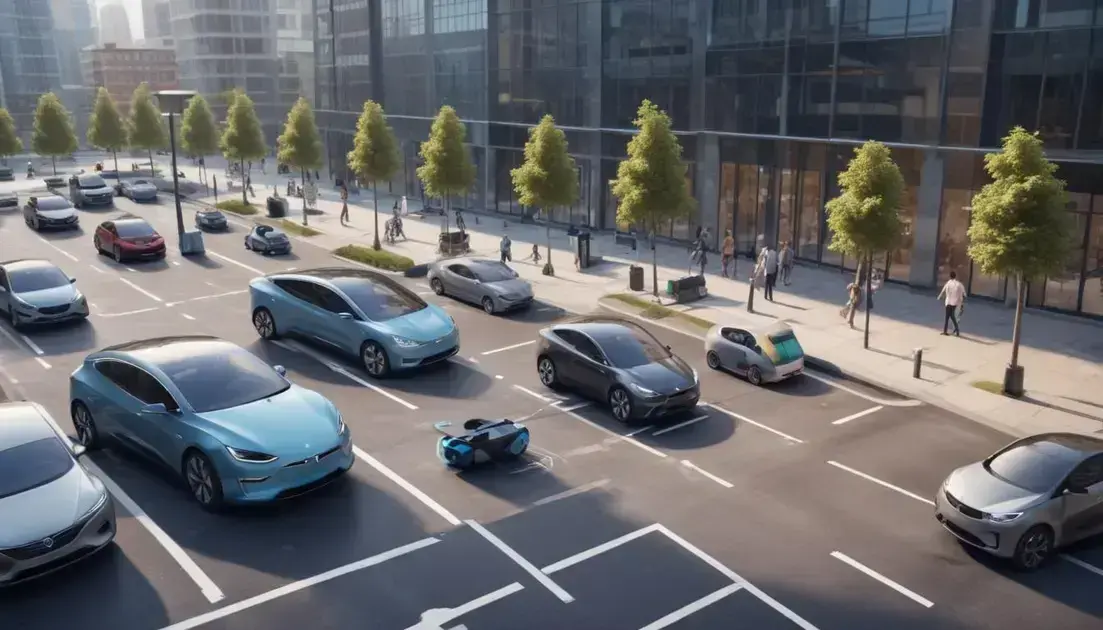Revolutionizing transportation with dual charging technology
Electric vehicles are transforming transportation by promoting sustainable travel, supported by expanding charging infrastructure and innovative collaborations between automotive and aviation industries to integrate land and air mobility efficiently.
In an exciting leap for transport, electric vehicles can now share charging infrastructure with flying vehicles. Have you imagined the possibilities of this new synergy?
Testing cutting-edge charging technology
Testing cutting-edge charging technology is crucial for the future of transportation. Recent advancements allow both electric vehicles and airborne craft to share the same charging infrastructure. This dual-use model is expected to optimize existing resources and make charging more efficient for all types of vehicles.
During various trials, engineers have discovered that implementing shared charging stations not only decreases waiting times for users but also enhances the overall energy efficiency of the grid. The interaction between land and air vehicles at these stations could lead to new innovations in how we harness energy.
Moreover, this paradigm shift is accompanied by the need for robust regulatory frameworks. As this technology becomes more mainstream, it will be essential for policymakers to establish guidelines that ensure safety and accessibility for all users. Collaboration among automotive manufacturers, aviation experts, and energy providers is vital to develop standards and support.
Lastly, public response to the testing phases has been overwhelmingly positive. Many users are excited about the convenience offered by integrated charging solutions. As these technologies continue to evolve, we anticipate significant strides in creating a smarter, more sustainable transportation ecosystem.
Collaboration shaping the future of transport
Collaboration is a key driver in shaping the future of transportation, particularly in the realm of electric vehicles and aerial mobility. As various industries come together, they are creating innovative solutions that merge these two modes of transport, leading to a seamless travel experience.
Partnerships between automotive manufacturers and aviation companies are allowing for the sharing of knowledge and technology. This exchange of expertise helps in designing vehicles that can efficiently use the same charging infrastructure, thus reducing costs and improving accessibility for users.
Additionally, collaboration extends to government entities and regulatory bodies. These partnerships are essential for developing policies that support the safe integration of flying vehicles into urban environments. Ensuring that regulations keep pace with technological advancements is critical for public acceptance and safety.
The involvement of technology firms also plays a significant role in this collaborative effort. These companies are contributing advancements in battery technology and automated systems, making electric and flying vehicles more viable for everyday use. As these groups work together, the future of transport appears more interconnected than ever, promising exciting opportunities for travelers.
Preparing infrastructure for electric air and land travel
Preparing infrastructure for electric air and land travel is essential for integrating these two modes of transportation smoothly. As the adoption of electric vehicles and flying cars increases, the need for adequate charging stations and maintenance facilities becomes paramount.
Urban planners are working diligently to create networks of charging points that cater to both electric vehicles and air taxis. These stations must be strategically located to ensure convenience for users, supporting a seamless travel experience. Additionally, renewable energy sources will play a vital role in powering these infrastructures sustainably.
Moreover, air traffic management systems need to evolve. They must accommodate the influx of electric aerial vehicles while ensuring safety and efficiency in urban airspace. Collaborations between aviation authorities and city planners are crucial to developing comprehensive strategies that address regulatory requirements and service reliability.
The transition to this innovative transportation model necessitates investment in technology for communication between vehicles and charging stations. Real-time data sharing will enhance the user experience by providing updates on availability and maintenance schedules. As cities start to adapt to these changes, the groundwork being laid today will set the stage for a more efficient and interconnected transportation future.
Impact on public EV charging networks
The impact on public EV charging networks is significant as the demand for electric vehicles (EVs) continues to grow. As more consumers embrace electric mobility, the need for accessible and efficient charging solutions has never been more critical.
Public charging stations are essential for supporting long-distance travel and easing range anxiety among users. Local governments and private companies are working together to expand these networks, ensuring that charging stations are conveniently placed in urban areas, highways, and popular travel routes.
Investment in fast-charging technology is also transforming the landscape. Fast chargers allow EV owners to recharge their vehicles quickly, making electric travel a practical choice for everyone. This technology not only benefits consumers but also encourages more individuals to consider switching to electric.
Moreover, the integration of charging networks with mobile apps and navigation systems provides real-time information about charger availability. Users can find nearby stations, monitor charging progress, and even reserve slots in advance. This level of accessibility enhances the overall EV experience, encouraging adoption and use.
In conclusion, the future of transportation is electric
The rise of electric vehicles and flying cars is transforming how we think about travel. With the collaboration of various industries, we are seeing significant advancements in charging technology and infrastructure.
Public EV charging networks are expanding, making it easier for everyone to switch to electric mobility. The impact of quick-charging stations and user-friendly apps enhances the experience for consumers.
As we continue to develop these technologies, it is clear that the journey toward a sustainable transportation future is well underway. Embracing these innovations will lead us to a more connected and environmentally friendly world.
Frequently Asked Questions
What are the benefits of using electric vehicles?
Electric vehicles offer numerous benefits, including lower fuel costs, reduced greenhouse gas emissions, and less maintenance compared to traditional gasoline vehicles.
How does charging infrastructure affect electric vehicle adoption?
A well-developed charging infrastructure makes it easier for users to charge their vehicles, reduces range anxiety, and encourages more people to switch to electric mobility.
What role do public charging stations play in the transportation ecosystem?
Public charging stations provide essential resources for electric vehicle owners, enabling convenient access to charging options in urban areas and along travel routes.
How can technology improve the charging experience for users?
Technology such as mobile apps can offer real-time information on charger availability, reservation options, and updates on charging progress to enhance user convenience.
What is the future of electric and aerial transportation?
The future includes the integration of electric vehicles and flying cars, supported by advanced infrastructure and sustainable energy sources, paving the way for smarter travel.
How can collaboration between industries shape transport innovation?
Collaboration among automotive, aviation, and technology sectors fosters innovation by sharing knowledge and resources, enhancing the development of efficient and safe transportation solutions.






